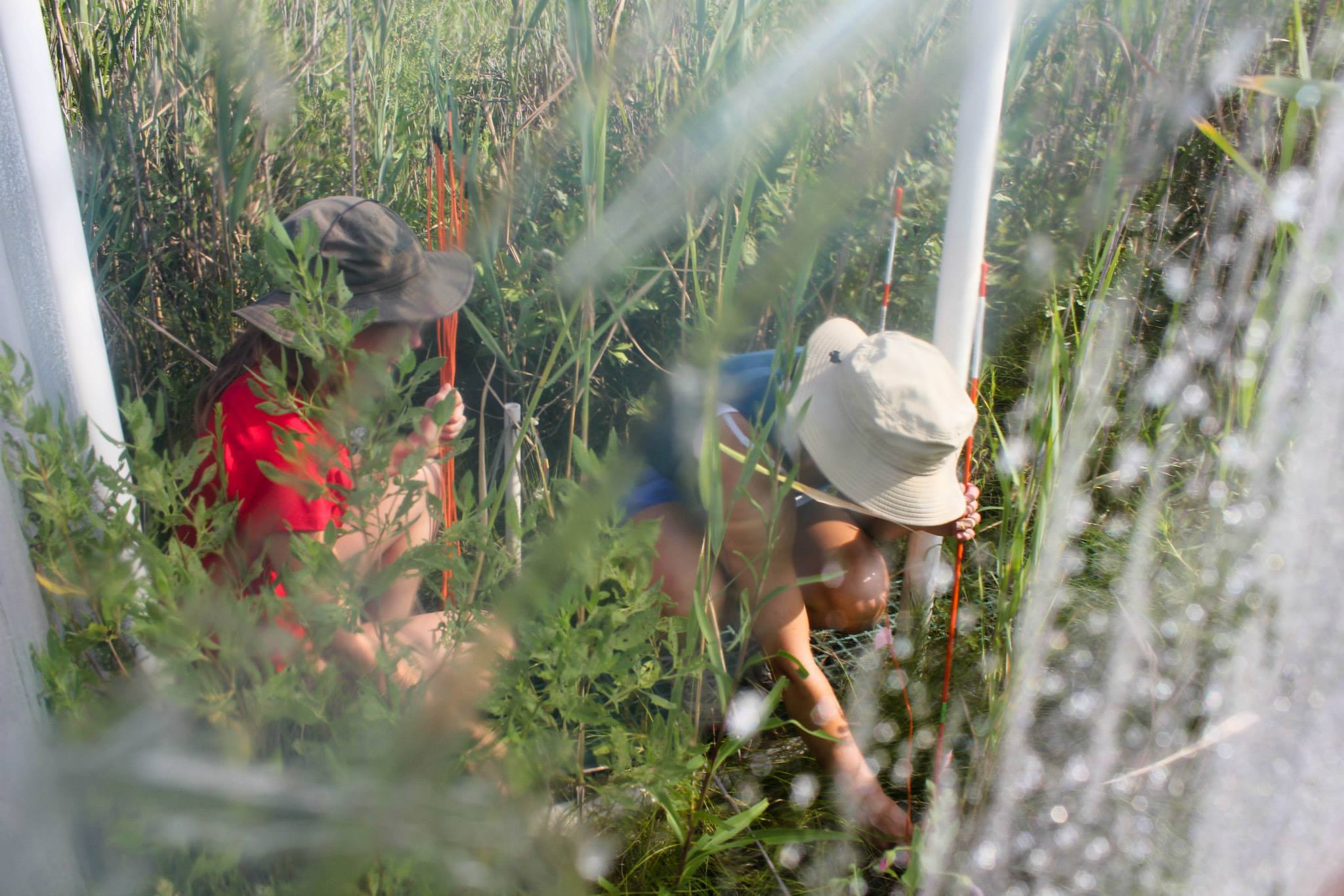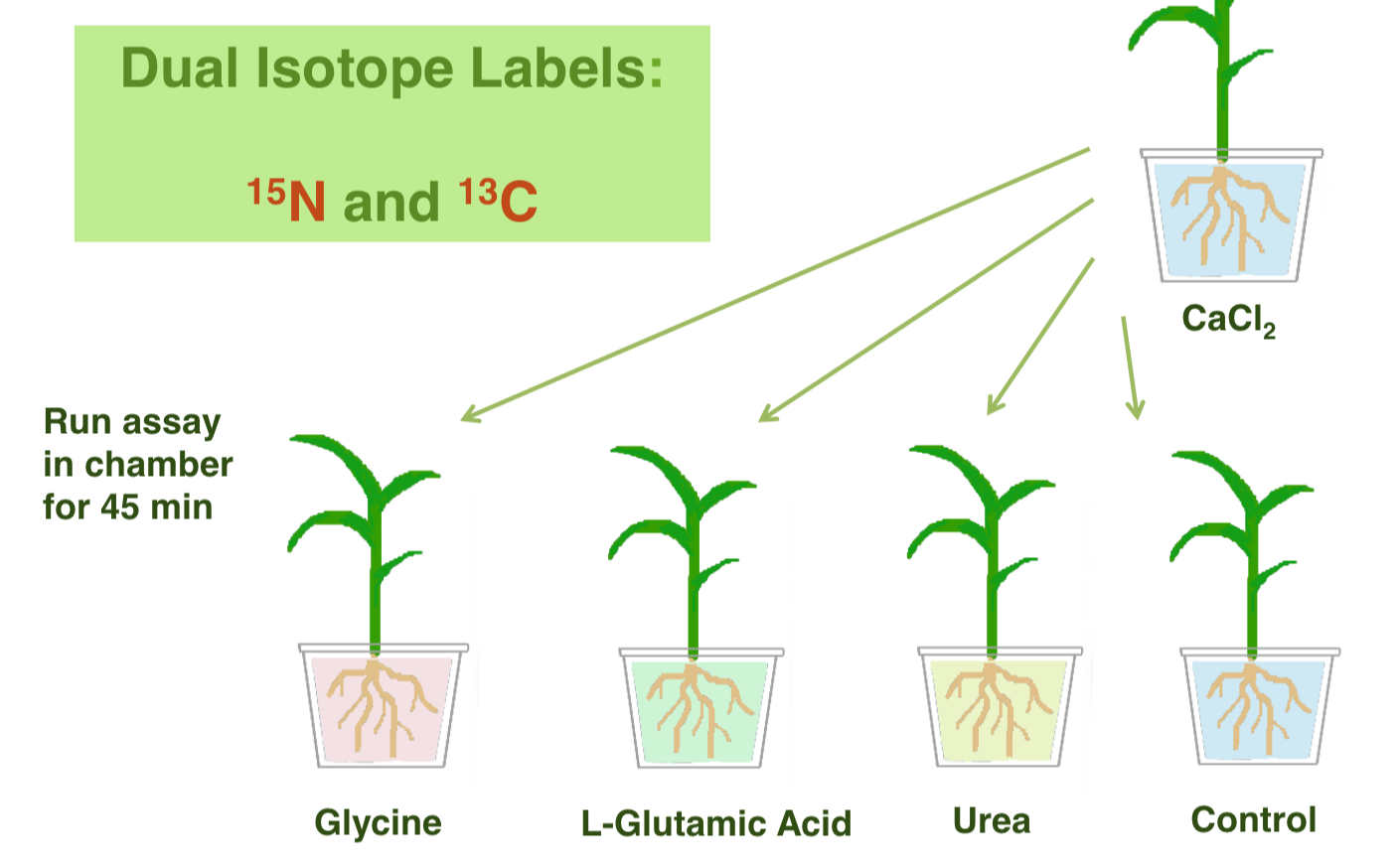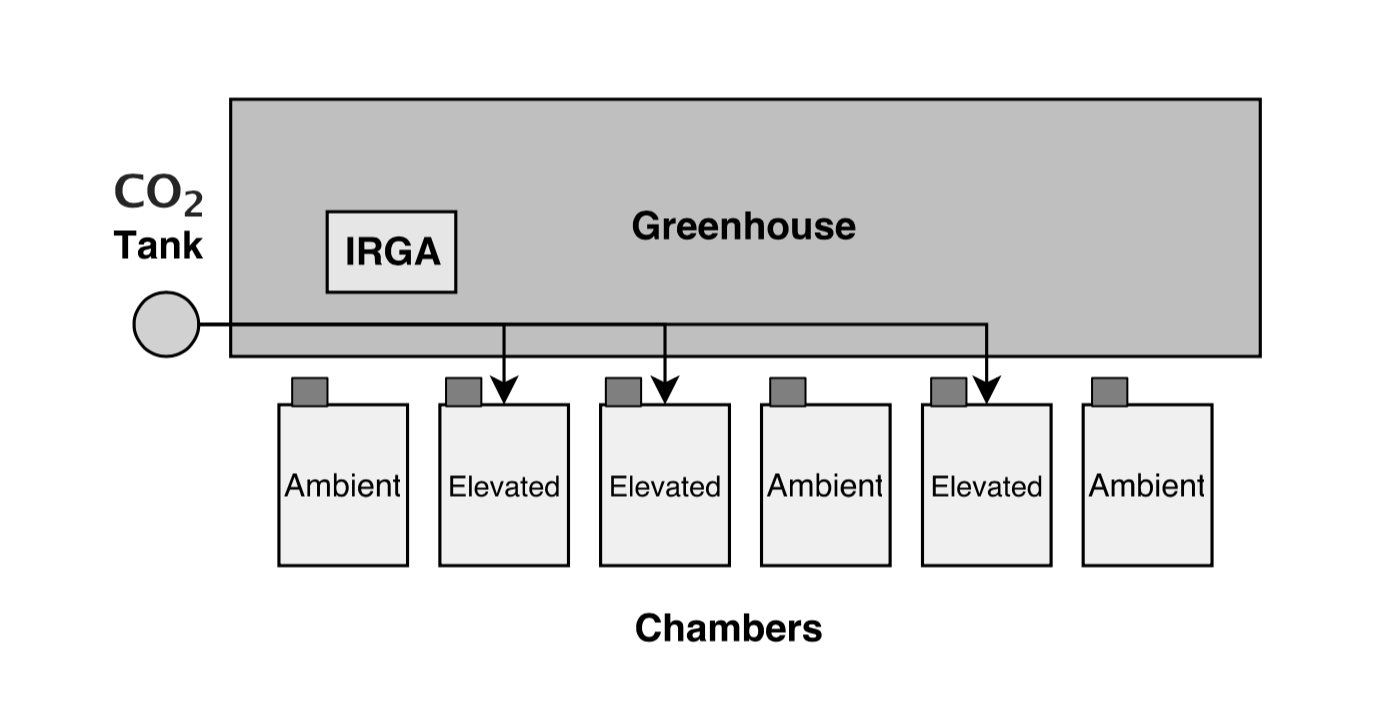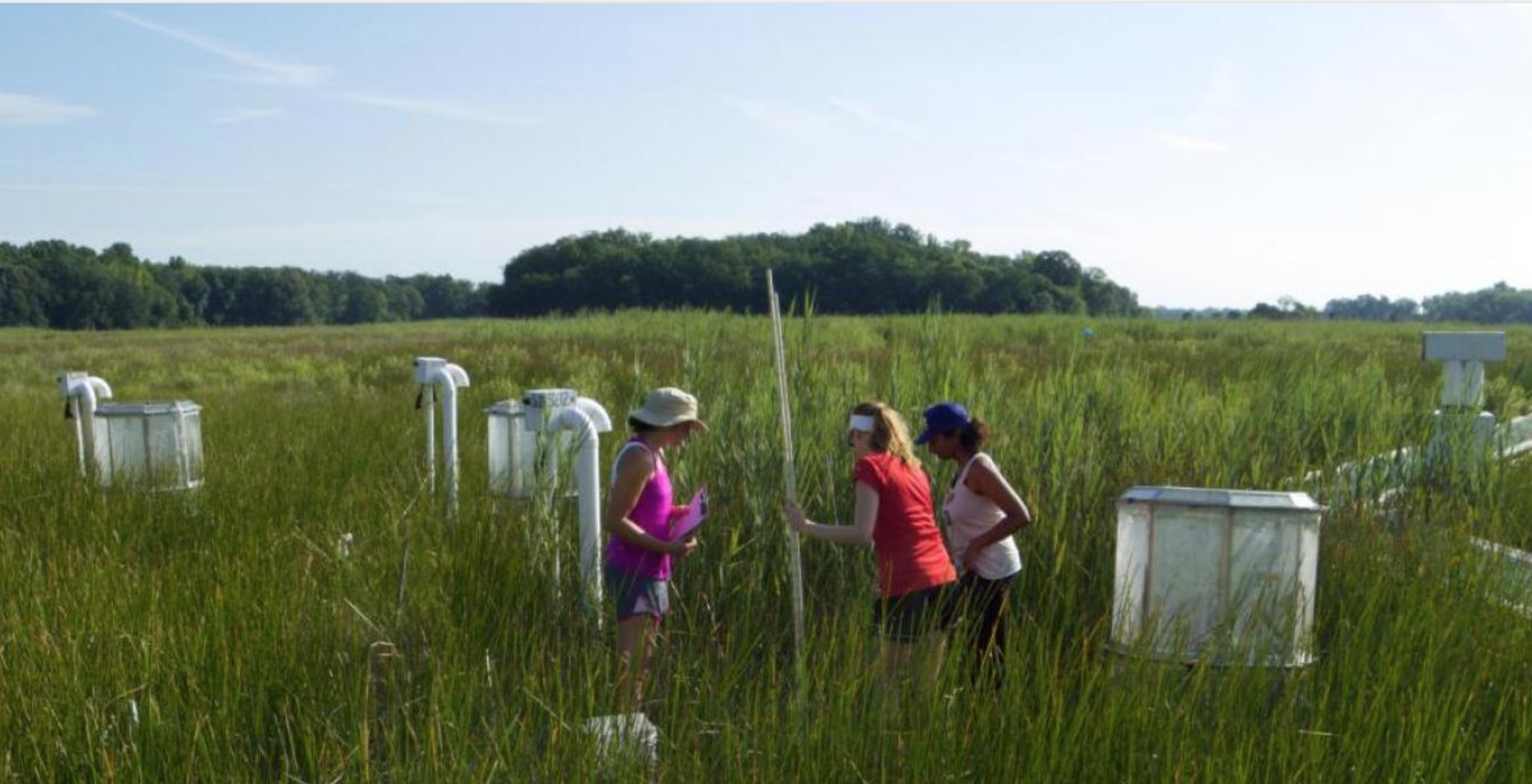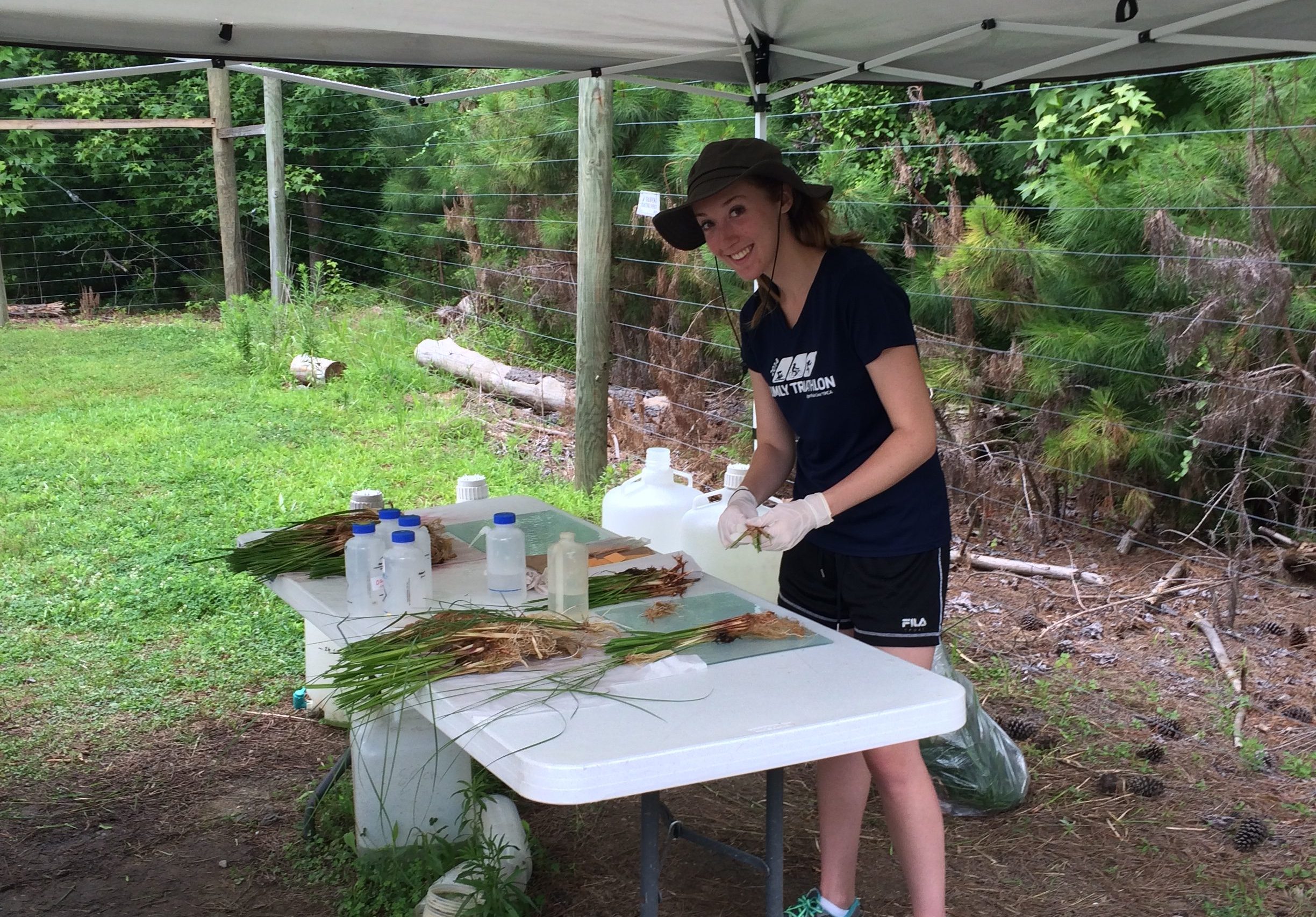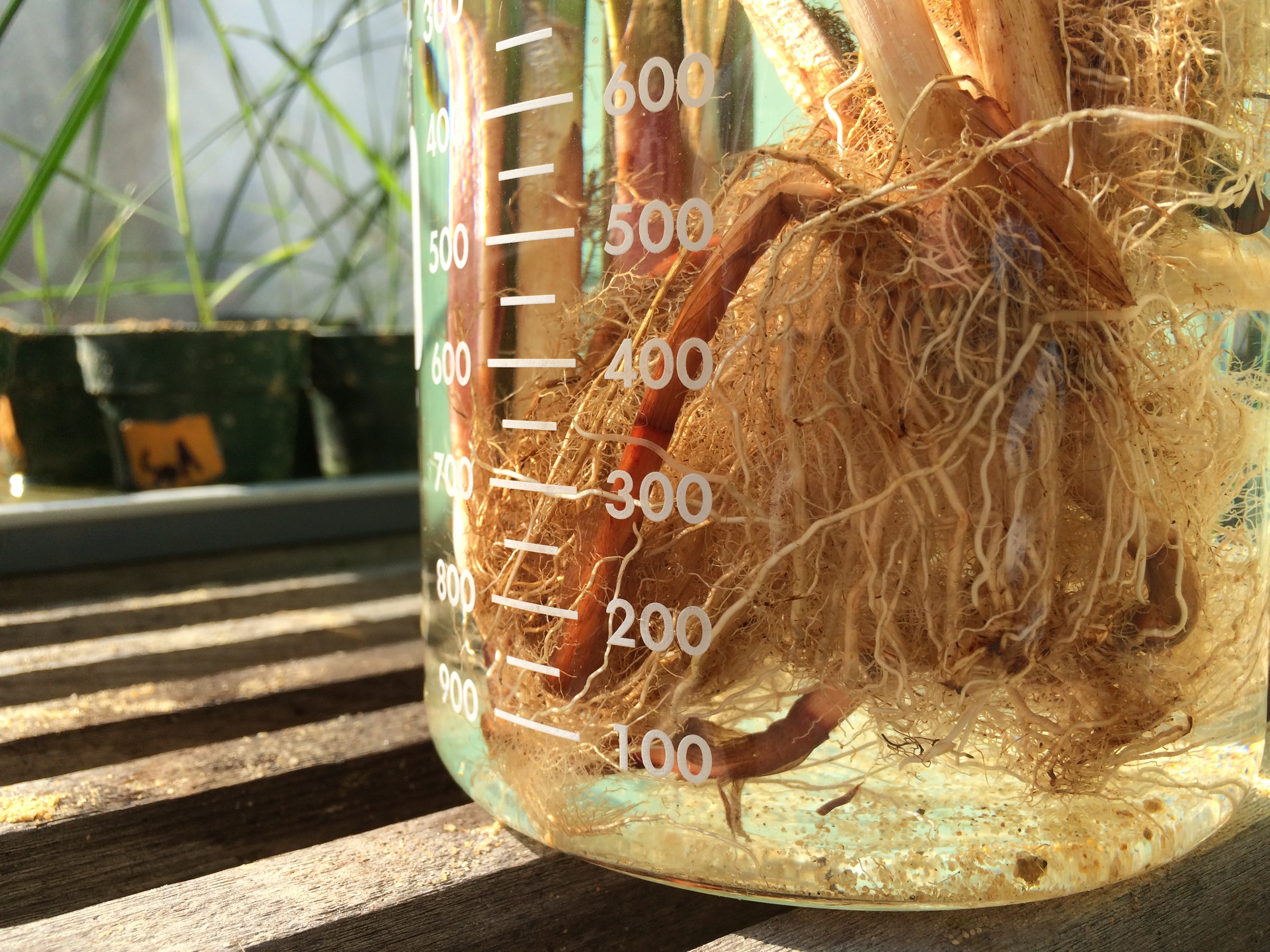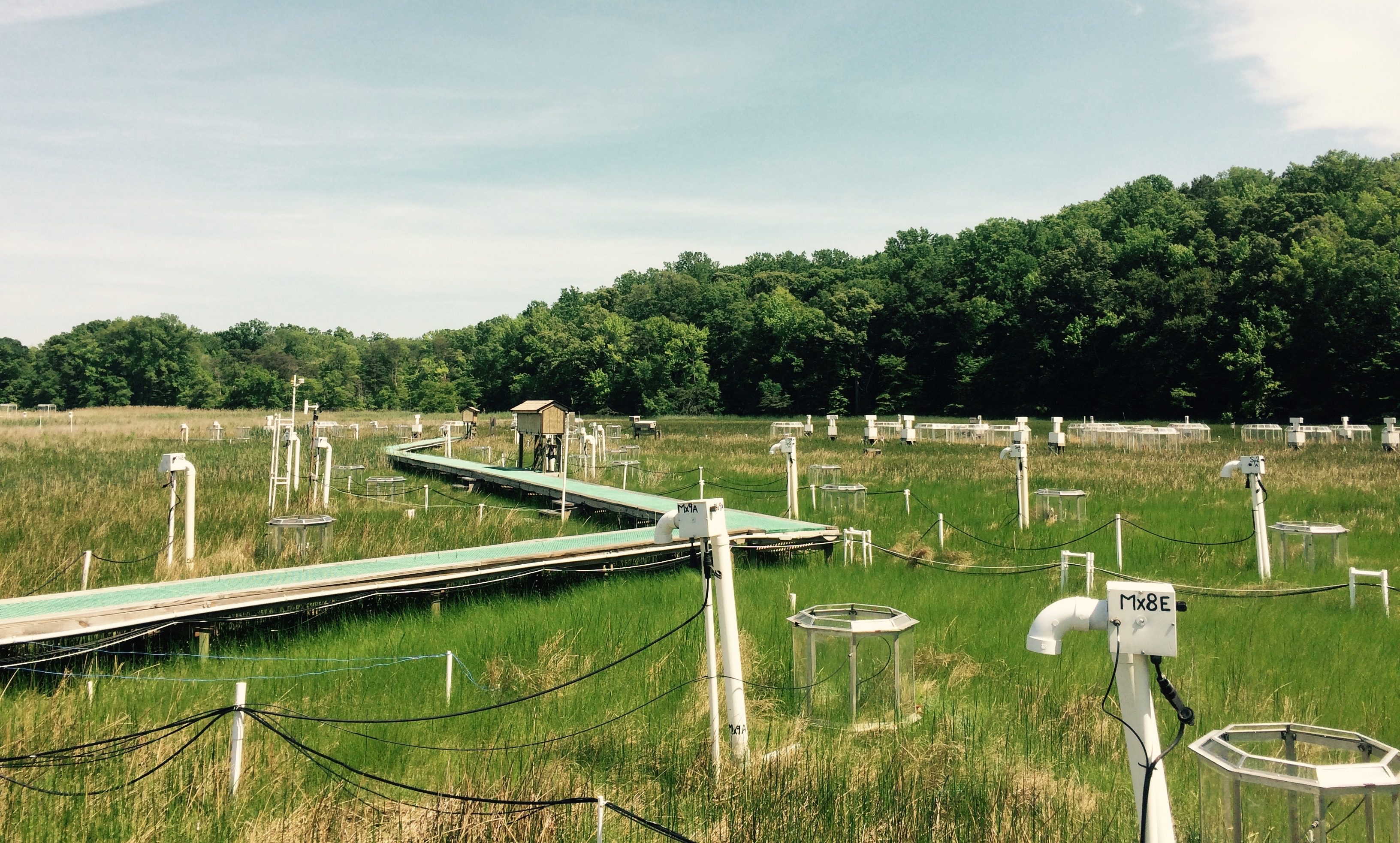Smithsonian Environmental Research Center / REU Project
Nitrogen Uptake + Elevated CO2
Investigated uptake of dissolved organic nitrogen by wetland plant seedlings in response to elevated CO2
This experiment aimed to address three questions:
- Can the study species (wetland plants Spartina alterniflora, Spartina patens, and Schoenoplectus americanus) take up dissolved organic nitrogen (DON)?
- Does CO2 have an effect on DON uptake?
- Are there differences between species in their ability to take up DON?
We used sealed chambers to increases CO2 concentrations compared to ambient concentrations and ran labeled isotope assays (for 15N and 13C) using 4 solutions (glycine, L-glutamic acid, urea, and a control with just CaCl2).
We found that there is DON uptake among these wetland plant species, with S. alterniflora and S. patents having greater DON uptake than S. americanus. However, since only seedlings were used in the time of my summer experiment, we observed no effect of CO2 on DON uptake. This shows that tidal wetland plants can exploit a variety of nitrogen sources and that glycine was most easily taken up amongst the treatments.
Smithsonian Environmental Research Center (SERC) summer internship program: https://serc.si.edu/pro_training/internships/projectmenu.aspx
